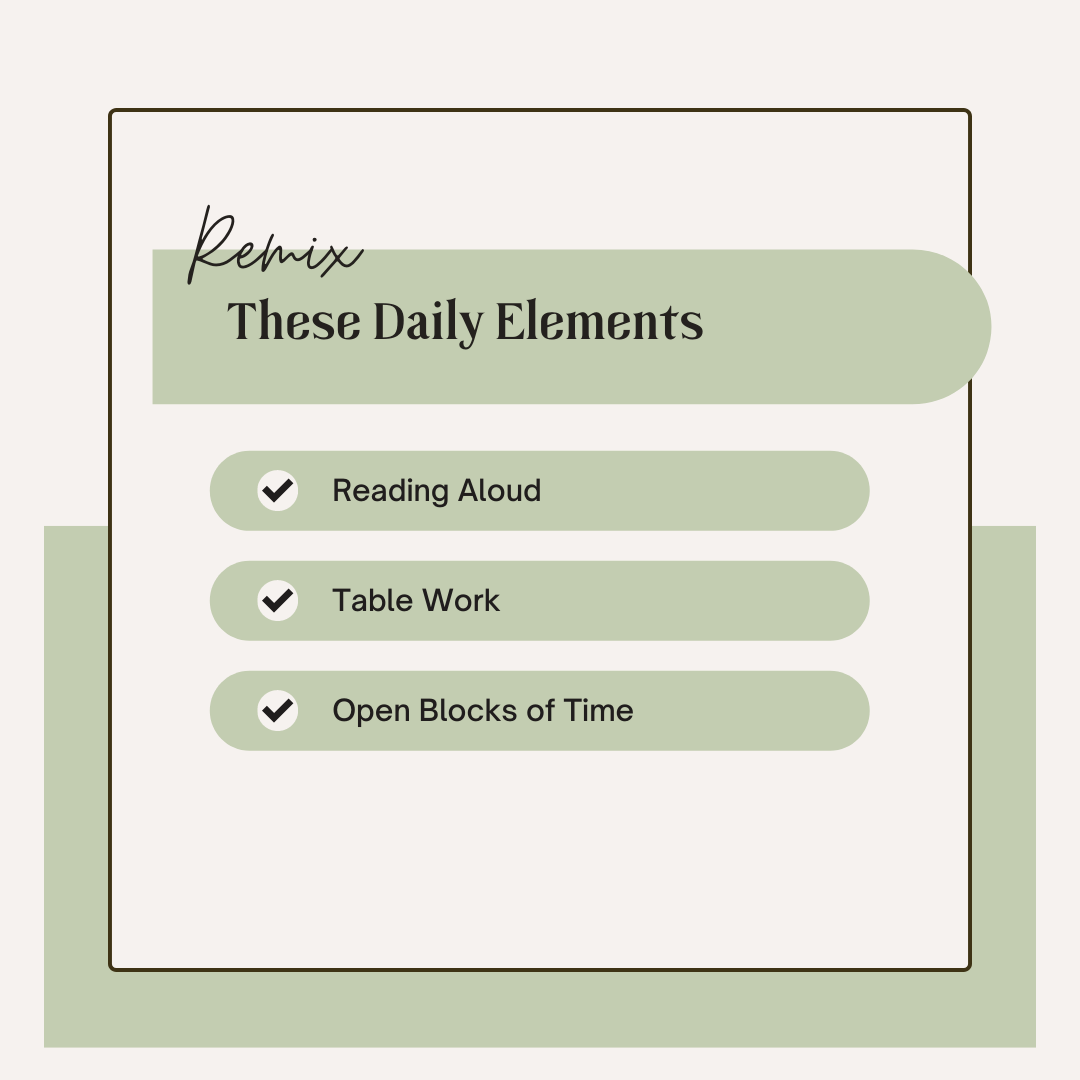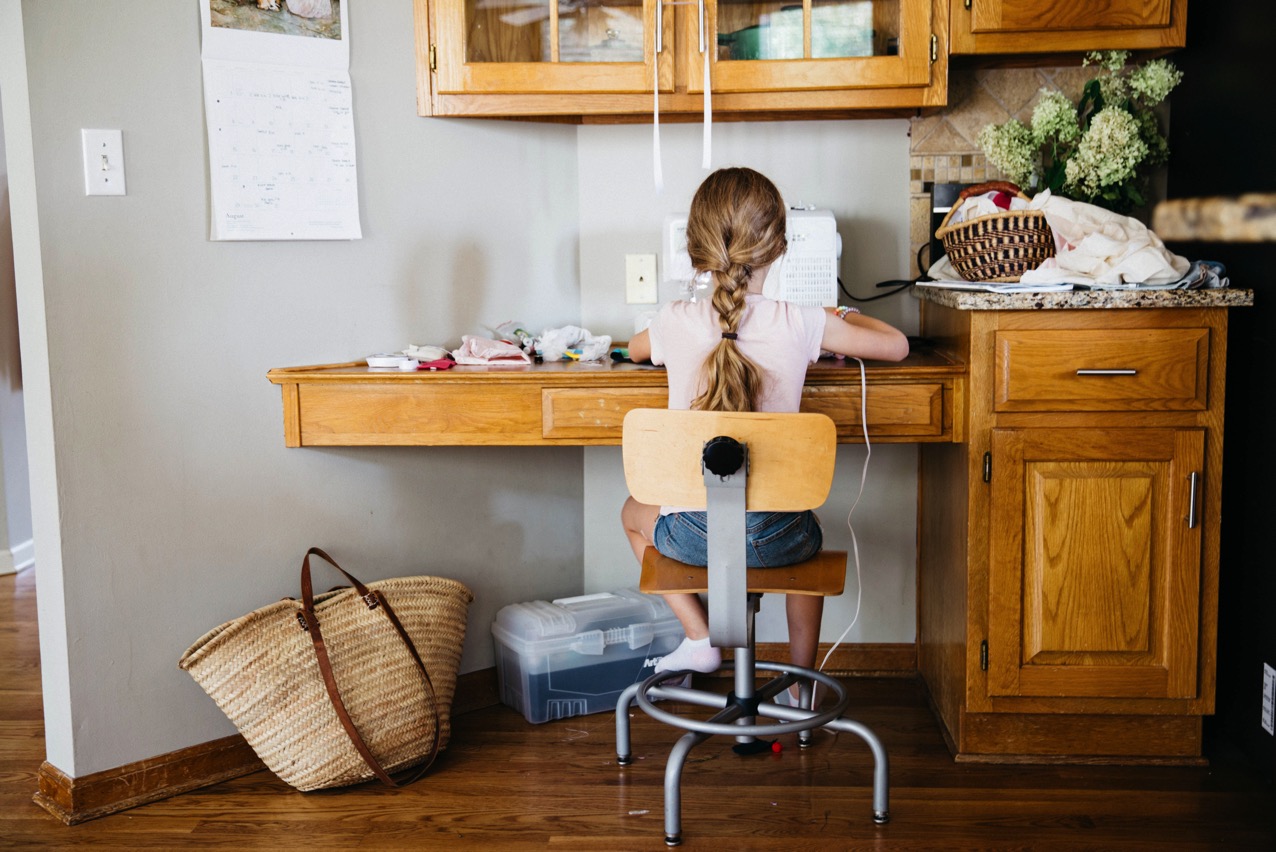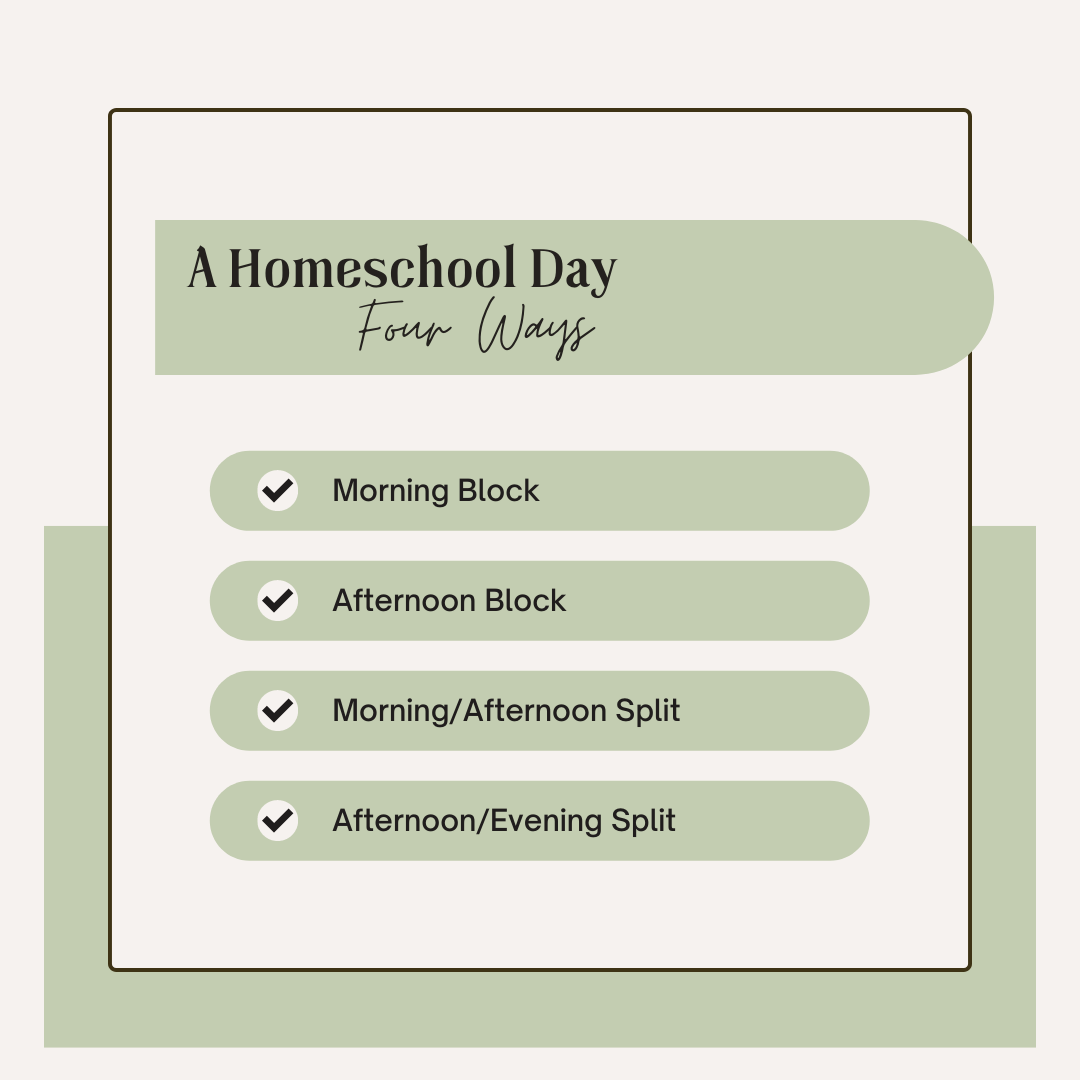Homeschooling is unique in that we don’t conduct learning in a separate, sterile environment. It happens in our homes, right in the middle of laundry piles, phone calls and babies who are not on our day time schedules yet. When you add in rabbit trails and sunny spring afternoons, a day could hold just about anything. In some ways we have a lot of control over our days, and in some ways we have none at all!
Life at home with children rarely happens on a predictable schedule. (If only they were robots with volume dials!) Instead of feeling stressed and inadequate over the collapse of the schedule or routine we labored to create, we can simply build adaptability into our week by having a few different plans in our back pocket.
I like to meet some of the special challenges of homeschooling by designing an adjustable, four-way school day. Here’s how I do it:

All of our days have a handful of anchoring routines. Those are the things that always stay in place no matter what: meal times, bedtime and chores.
I don’t do time schedules because it is not sustainable in a houseful of six people. Instead of set times, I use blocks of morning, afternoon, and evening help us stay on track while giving us plenty of margin.
For a school day I need time for the following: reading aloud, table work (for the skill-building subjects like math, spelling, writing, phonics) and big, open blocks of time for interest-led learning.
(You can read about my simple planning schema here and our guided unschooling philosophy here!)
I remix these daily elements to compose four different formats for my homeschool day.

Here are the ways that I like to arrange it:
Morning Block
This is my highest energy, highest motivation option! When I am feeling energized and focused I like to do all of our formal learning in the morning. This works especially well when I’ve gotten up early before everyone. (It’s hit or miss depending on whether I’ve stayed up late working or gone to bed early with a book!)
I’ll gather everyone for our morning basket and do our read alouds in the living room. Then we’ll move to the table for math, writing, and language arts. We’ll aim to finish up in time for lunch. Sometimes if I’m feeling ambitious, I’ll tack on a hands-on project to the afternoon. Most of the time I simply take time to recharge, work or do other household tasks while everyone plays.
This is how we did school in the first three years before Levi (our fourth) came along! For most people, this is the most obvious option because week day mornings fit naturally with traditional work and nap schedules. For some personality types, morning is the most productive time of the day.
The downside is that sometimes it can feel a little forced or crammed. You might meet some resistance when your creative children wake up and decide to build a Lego city or sew a menagerie of stuffed animals! If this is the case in your home, read on!
 Afternoon Block
Afternoon Block
I often use this option when I don’t want to interrupt my children from a morning of deep play or self-led learning projects. While the girls are playing or working I’ll do some light prep by gathering books, sharpening pencils and laying out math sheets! Then I’m ready to jump in at a natural break.
Lunch is typically the natural break where I can re-direct everyone into some guided learning. I’ll put the baby down for his nap and then bring the morning basket to the table where everyone is finishing lunch. I’ll do our reading there and then jump into math, language arts and writing practice. We often put whole wheat chocolate chip cookies or banana bread in the oven for our afternoon snack and do writing or math while it bakes! (Math is better with banana bread. That has been fact checked.)
 Morning/Afternoon Split
Morning/Afternoon Split
This is the option I have used the least, but it works best for when I have administrative work like phone calls or appointments that can only be done in a mid-morning window. When I do this, I’ll typically go right into table work after breakfast and save reading for the afternoon (or maybe vice versa!) That all depends on how cooperative people seem and how much energy I have to take on the morning. Since I’m trying to get Levi used to being a part of our read aloud times, I have a feeling that I will end up using this format more this year!
Afternoon/Evening Split
This is my lowest energy option and the format I have used the most for the last two years. I like it for having a toddler or baby around because it offers me the support of nap time and having David to help in the evenings.

Having a baby always means middle-of-the-night wakings for one reason or another! In the first two years of having a baby, I sleep as long as my kids will let me in the mornings. Sleep is an absolute priority for my body when I’m nourishing a little one. I will use my mid-mornings for things like exercise, showering, bible reading and eating a good breakfast while kids play or self-direct their learning. I’ll place formal school later into the day.
Here is how that looks: After lunch I put the baby down for a nap, turn on some music and start the diffuser or light a candle. I’ll work with the girls on math, language arts and writing over a hot cup of afternoon coffee. We can usually even add a hands-on project and finish it up as the baby is waking up. My girls loved this one-on-one time in these past years when so much of my physical energy went to nursing and caring for Levi. Sometimes I could even fit in an afternoon rest for myself, depending on everyone’s needs.
In the evening after dinner David would entertain Levi while I read to the girls after bath time. He would go down to sleep at about 7:30 and then I would finish reading and leading discussions until the girls’ bedtime at 8:00. We would often do this in my bedroom while I sat in the rocker nursing and the family piled on our bed.

I tend to change what format I use depending on the day. Some weeks may be consistent, and some might be more variable. I’m able to change the school day format frequently because our anchoring routines of meal times, rest and play keep everyone feeling grounded.
Even if you don’t use flexible formats to accommodate interest-led learning, you can use them for lots of other reasons (like working around a newborn or toddler!) The formats above have helped me do that in seasons of burnout or overwhelm. They’ve also helped me on great days when I feel energized and want to finish school work so we can take an outing to the library and a coffee shop! Sometimes in order to have a sustainable homeschool, we just need to bring some freshness and change into our day!
For candid thoughts on faith, motherhood and homeschooling, subscribe to my Substack newsletter!